修復高級班
5, 2004



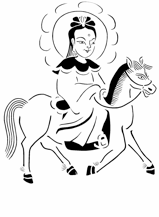

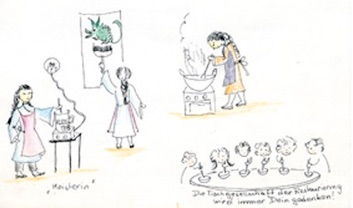

修復高級班
5, 2004



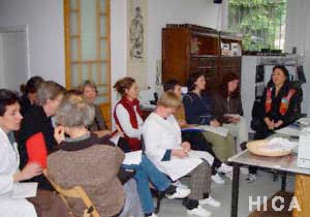
The course
There had been an advanced course »Lining with paste« at the HICA workshop in Mannheim from May 6th to 8th, 2004. 14 restorers participated. And most of them came from Germany, but also from Spain (2), France (1) and Switzerland (4). The participants in general either work as the head of a restoration workshop, e.g. of the Bavarian State Library in Munich, the Institute for Preservation of Archival Materials in Ludwigsburg, the State and University Library of Bremen, the Foundation of Prussian chateaus and gardens Berlin-Brandenburg or as the head of a well known private workshop. There was one free lance artist in the course, Susanne Heilmann, who has been painting on Chinese paper for already 20 years.
Content of the Course
Preparation and use of paste of different compositions and consistencies for lining and moistening, mounting and stretching of lined paper at a karibari, removing it from the karibari under avoidance of tears, trimming of edges of paper, design and making of karibaris and of corresponding special tools, mounting and framing.


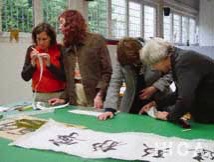
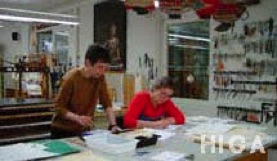
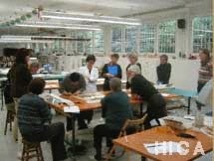

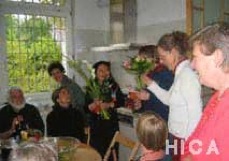

Lining with starch paste
From May 6th to 8th, 2004, 13 restorers from 4 different countries came together in Mannheim to participate at the workshop entitled »lining with starch paste«. On arriving at the Hua-Stroefer‘s property in the Karl-Kuntz-Weg, we were welcomed by beautifully blossoming peonies in many different colours. This Asian idyll and the cordial hospitality provided the days with a serene and harmonious atmosphere. As expected, Mrs Hai-Yen Hua-Ströfer had competently prepared the schedule. The single brushes had been well-prepared for the participants and thus everyone occupied a seat in the huge, bright workshop and could work with his or her own utensils.
For some working processes special tools were required, which were made by the participants themselves. The creation of a bamboo-spatula out of raw material was as interesting as the making of small pins trimmed in Chinese Silk.
The production of paste was demonstrated in detail. In order to ensure a smooth workflow, Mrs. Hua filled the paste, which had been cooking for some time, in preserving jars. Thus the basic substance “paste” was available anytime. The substance was then pressed through a squeezer like glass noodles. After some time of bruising it in a stone trough, a transparent, smooth substance emerged, which was ready for use, after having been finally pressed through a horsehair sieve.
The different lining-methods were tested by the participants themselves on three beautifully designed, calligraphic sheets. The work was finally completed by stretching of the sheets on the drying wall (karibari). During the wet-lining process, the original sheet was covered with paste and provided with a dry lining-paper. In the course of the drying-procedure, the original sheet was only slightly moisted, and the lining-paper was then applied in a wet state. The setup and the effect of a karibari were discussed in detail. Afterwards, the assistant, Ms Zhang, showcased the structure of a Chinese hanging scroll.
Hello Ms. Hua,
soon it will be one year since I attended your course (in May 2004). I believe we had a certain connection based on our conversation about the cancer disease.
Metastases occured again on my body (head and lungs). But anyway I‘m feeling well! I am medically well adjusted and, of course, also mentally. When it broke out again, I thought about the past year and what beautiful events it had to offer.
Among other things, it was your course that came to my mind! You wouldn‘t believe what an aesthetic delight this has been for me. Your house, your workshop!
Your hospitality was outstanding, our whole group was simply good and enriching. I would also like to include your husband, and not least Mrs. Krauss and the dear Mrs. Zhang.
Hearty greetings to all of them! I thank you very much again and wish you all the best!
Kind regards,
Irene. December, 2004.
.............................................................................................................................................................................................................................................
HICA

Excerpt from the newspaper "PapierRestaurierung" Vol. 5 (2004) - No.3
Cornelia Bandow, Franziska Richter - Ludwigsburg
The newly learned techniques were then practically applied on own sheets. The exercise sheets, which had already been lined once, were now provided with a silk bordering and a backing, during which all parts are labeled accordingly. The lateral bordering pieces are called »pillars«, and the borderings at the bottom and on top are named »earth and heaven«. The original sheet that is to be lined is considered as the »heart«, and for the lining paper the term »life« is applied. The appropriately mounted picture was then provided with a doubly lined backing. This consisted of two long-stranded restoration papers lined in opposing directions. Finally the scroll painting was stretched on the karibari. Mrs. Hua was then besieged with countless questions to the subject. The demonstration of the lining on silk was as interesting as the smoothing of the finished objects with the stone or a glass bead necklace.
During breaks we were warmed up with delicious tea. Even though it was raining incessantly, this did not affect the cheerful atmosphere. At lunchtime and in the evenings the participants were indulged with culinary delights of the Chinese cuisine. Thereby the large amounts of Chinese ravioli were something special. Each attendee will keep those days in special memory. Thus, a cordial thank you is owed to Hai-Yen Hua-Ströfer and her two assistants for the hospitality and the professional expertise.
.............................................................................................................................................................................................................................................
..............................................................................................................................................................................................
修復札記